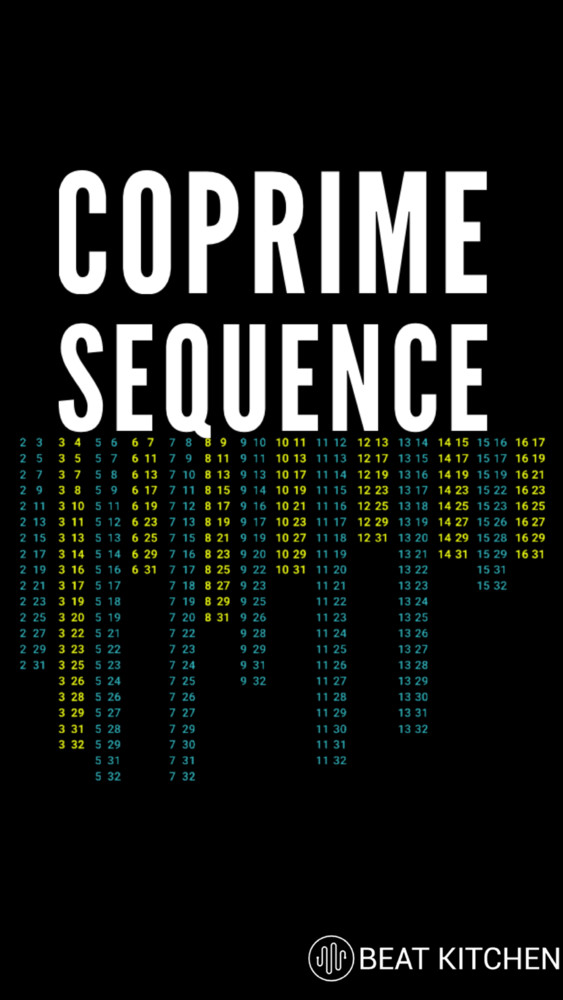Co-prime sequences are a backbone for evolving variations in pattern-based music. It’s trivial to set them up in your DAW, but in your fingers, not so much. Taking some time to hear them can expand the way you enjoy polyrhythms, help you develop some left-right hand independence, and you don’t need to be a virtuoso to do it.
Co-prime pairs don’t quite click. Until they do. They create an evolving musical tapestry and generate unexpected musical results.
Co-prime numbers share no common factor except one. You may be using these already without even realizing it. Imagine layering two loops.
One is three beats long and the other is four. They’ll create a pattern that only fully repeats every 12 beats. Set a sequence of 9 over 4 and it cycles every 36 notes.
5 against 4. It’ll create a mesmerizing pattern that only repeats every 20 beats. Every note plays against every other and every note falls on a downbeat.
Now in your hands, it’s a little harder, but if you take it slow, you’re going to train your ear to hear it as you play it. To get started, play the first four notes of a minor scale in one hand, and in the same direction, the first five notes of that scale in the other. Identify other co-prime pairs by breaking down each number into its factor or find as great as common divisor or just use the little chart I made you.
By the way, any two consecutive numbers are always co-prime. For extra credit, take larger pairs and squeeze them into the same duration for an impossible tuplet, and at fast tempos, this will become sound design. It’s a mix of familiarity and surprise, and I promise it won’t always sound like math, but if you do want to go down this rabbit hole, you can also look into things like set theory and Cartesian products and share them with someone who belongs in a Beat Kitchen class.

